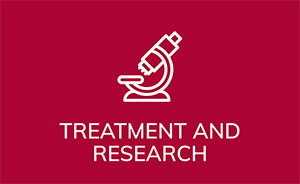Dr. David Maloney of the Fred Hutch in Seattle, WA, is a pioneer in CAR-T (chimeric antigen receptor T cell) therapy and brings his deep experience and broad knowledge to a historical perspective and vision for the future.
CAR-T therapy is still experimental in CLL and has been mainly used to treat the worst of the worst who have been through just about everything. In other words, the most difficult to treat patients.
But the future should see CAR-T moved up sooner for CLL treatment.
Dr. Maloney was my doctor at the Fred Hutch when I had my CAR-T treatment in 2018 and we reconnected at ASH in Dec. 2019.
Takeaways:
- At this time, most CLL patients receiving CAR-T have failed prior chemo-immunotherapy (CIT) and novel agents. Some, like me, have failed transplants too.
- This can lead to a more aggressive form of CLL that mutates easily, grows fast and can be hard to control.
- The more disease at the time of CAR-T infusion, the more the cells must expand. This increases the risk of toxicities and the chances that the cells might mutate and lose the surface marker, CD-19, the target for this generation of CAR-T cells.
- We know in other blood cancers where CAR-Ts are approved, those with less disease have fewer side effects and tend to do better.
- In the future, as less CIT is being used, we should see different types of CLL patients that are easier to treat, and these patients should have even better outcomes.
- We are already seeing some patients who fail all our top 3 drugs (ibrutinib, venetoclax and obinutuzumab) either all given together or sequentially; so CAR-T is going to be needed despite all the advancement.
- Cellular therapies are the poster child for fixed-duration therapies. Usually one and done!
- Cellular therapies, such as stem cell transplants, have the potential to be curative.
- There is reason to be hopeful that CAR-T, another type of cellular therapy, may also be curative, as some patients are > 5 years with no detectable disease in Dr. Maloney’s trials.
- At ASCO 2020, doctors from the NIH presented data where a handful of patients were disease free 10 years out!
- Some patients (including me) reach undetectable measurable minimal residual disease, or uMRD, but still have some lymph nodes that have not shrunk back to normal size, arbitrarily defined as 1.5 cm. So they are only in a partial remission. This is likely due to scarring and not persistent cancer in those nodes. These patients tend to do just as well as those who reach a complete remission. Reaching uMRD is what really counts.
- Taking ibrutinib before harvesting the T cells and after receiving them, improves outcomes and lowers toxicities.
Conclusions:
All treatments, when they are new, tend to be used at the end of the line. This is screamingly true with CAR-T therapy.
As CAR-T moves up in the treatment pathway, and those it treats are less beaten up with chemo and all the new drugs, we can expect even better outcomes and less side effects that are more easily managed.
Today, CAR-T is a lifesaving option that offers deep durable remissions in many patients who have run out of options. Tomorrow it will be even better.
Here is my ASH 2019 interview with Dr. Maloney.
For more background on CAR-T, see our CAR-T section of our website here.
For more on disease staging and uMRD, look at this.
On a personal note, I feel so blessed to have had Dr. Maloney and the team at the Hutch care for me and am thrilled to have less than one in a million cancer cells in my bone marrow when I was last tested about 2 years post CAR-T.
It is an amazing therapy.
Stay strong. We are all this together.
Brian Koffman
Dr. Brian Koffman, a well-known retired doctor, educator, and clinical professor turned patient has dedicated himself to teaching and helping the CLL community since his diagnosis in 2005. He serves as the Executive Vice President and Chief Medical Officer of the CLL Society Inc.
Originally published in The CLL Society Tribune CAR-T Special Edition.



